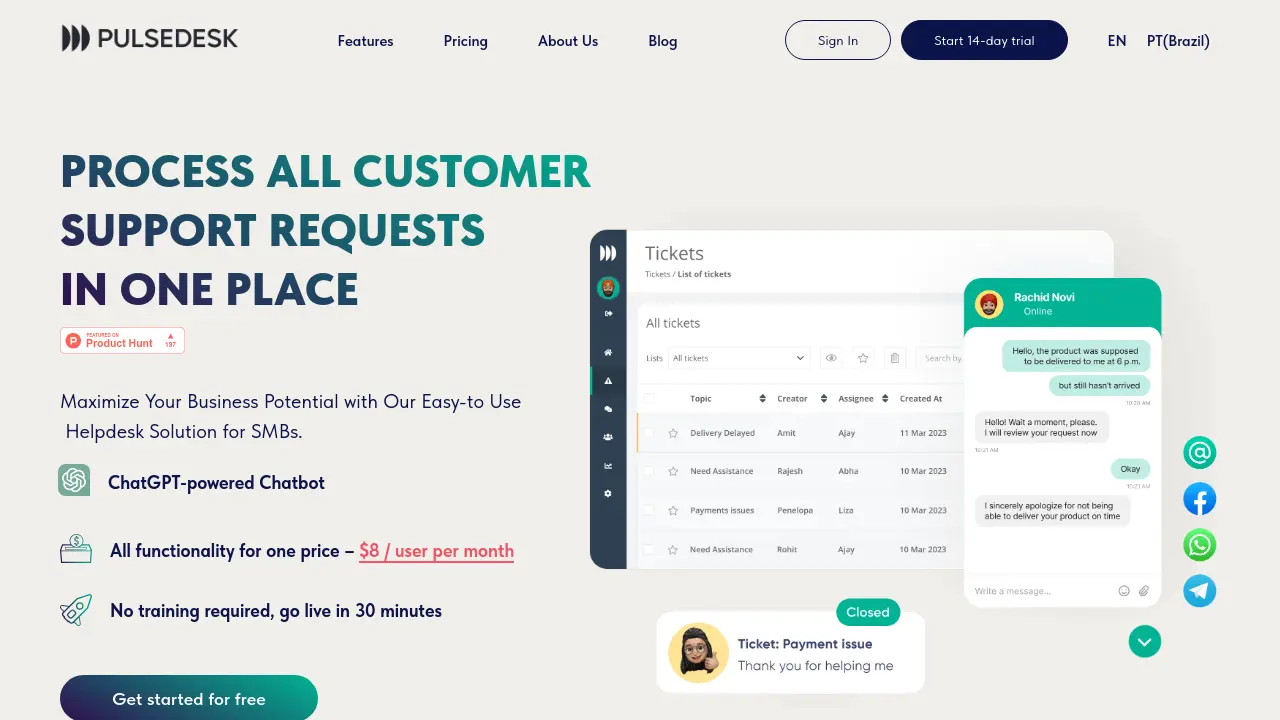Pulsedesk
Easy-to-Use Helpdesk Solution with ChatGPT for SMBs

Description
Pulsedesk provides a comprehensive helpdesk platform specifically designed for small and medium-sized businesses (SMBs). It aims to simplify customer support operations by consolidating interactions from various channels, including Gmail, WhatsApp, live chat, and a dedicated client portal, into a unified system. The platform emphasizes ease of use, enabling businesses to go live quickly without extensive training.
Key functionalities include a robust ticket management system, workflow automation capabilities to streamline repetitive tasks, and detailed reporting for tracking key service metrics like response times and resolution rates. Pulsedesk incorporates a ChatGPT-powered assistant to help support agents enhance response speed and maintain a consistent brand voice. Additional features like a customizable knowledge base for self-service, a client portal for tracking requests, a mobile application for on-the-go support, and an open API for integrations make it a versatile tool for managing customer service effectively and affordably.
Key Features
- ChatGPT-powered Chatbot: Enhances response speed and adjusts tone using AI.
- Multichannel System: Consolidates requests from Gmail, client portal, WhatsApp, and live chat.
- Ticket System: Organizes, assigns, and tracks customer queries.
- Workflow Automation: Automates support processes using flexible triggers.
- Reports and SLA: Tracks key customer service metrics and manages Service Level Agreements.
- Knowledge Base for Clients: Enables creation of a self-service help center.
- Customer Portal: Allows clients to submit and track requests (Whitelabel option available).
- Mobile Application: Provides access to helpdesk features on iOS and Android devices.
- Open API and Integrations: Facilitates connection with other business software.
- Live Chat Widgets: Offers embeddable chat options for websites.
Use Cases
- Centralizing customer support communications from multiple channels.
- Improving agent efficiency with AI-assisted responses and automation.
- Managing and resolving customer tickets systematically.
- Providing customers with self-service support options.
- Tracking and analyzing customer service performance.
- Offering real-time support via live chat.
- Enabling remote customer support through a mobile app.
You Might Also Like
Anduril
Contact for PricingAI-Powered Autonomous Systems for Defense
Speaking Character AI
FreemiumCreate Interactive Characters with Custom Voices
Lightrail
FreeThe Ultimate AI Command Center
Mento / AI
OtherPersonalized, Guided, AI-driven Mentorship
Splend AI
FreeCreate Art with Midjourney, Stable Diffusion and Dall-E in a single App